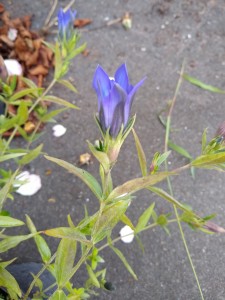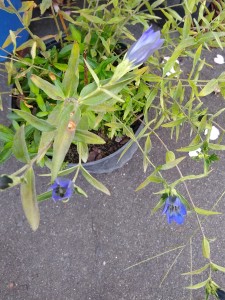 Garden centers are catnip to me. I watch for them when I travel, and if at all possible, stop in, even if only for a few minutes. In winter, I make note of promising places, aiming for return trips when the days lengthen and the sap has risen.
Garden centers are catnip to me. I watch for them when I travel, and if at all possible, stop in, even if only for a few minutes. In winter, I make note of promising places, aiming for return trips when the days lengthen and the sap has risen.
I have passed a particularly tempting garden center many times on the way to somewhere else. Nine times out of ten, the garden center, which was large and fully stocked, was closed when I went by. Other times I was forced to pass the driveway because I was on the end of a long vacation car trip and my fully loaded vehicle lacked room for even the smallest crocus bulb.
But patience is a virtue and persistence triumphs in the end. I finally went to the garden center on purpose and was rewarded with an interesting selection of plants. One perennial specimen, blooming gorgeously in an unadorned gallon pot without price or plant tag, grabbed my imagination and refused to let go. The anonymous plant featured long, arching, stems, willowy leaves and vivid blue flowers. The open blooms, each about two inches long, resembled small tulips with pointed petal ends. The flower buds were tightly furled, like tidy English umbrellas.
I am never even faintly deterred by an unlabeled nursery pot. The striking blue of the blooms was my first clue to the mystery plant’s identity. Few flowers boast such an exuberant shade, but among the most prominent representatives of that select group are members of the Gentianaceae or gentian family. “Gentian blue”, in fact, has long been a celebrated color. In my mind, the words conjure up images of cerulean silk gowns worn by Edith Wharton’s fictional society women.
The furled flower buds were reminiscent of common Vinca minor and other members of the Apocynaceae or dogbane family. I had a vague recollection—later confirmed in the pages of Roger Phillips’ and Martin Rix’s masterpiece, The Botanical Garden–that the two families, dogbane and gentian, are closely related.
My daughter, who is botanically astute, agreed with my gentian reasoning and thought the key to identifying the plant lay in the willow-like stems and leaves. She was right. Our mystery specimen, now residing in the holding area of my garden, is willow-leaf gentian or Gentiana asclepiadea. The species name, “asclepiadea” means, “like asclepia” or milkweed. This is probably a reference to the long narrow leaves characteristic of many milkweeds, and it has given rise to one of the plant’s other common names, milkweed gentian.
Gentians as a group have a reputation for fussiness, but reference sources agree that willow-leaf gentian is among the easiest to grow. All my new plant needs is a lightly shaded site with consistently moist soil, and it will branch out to a mature height of two feet tall and just slightly wider. The flowers spring from the leaf axils—the places where leaves meet stems—and appear in late summer or early fall, depending on where you live. It appears that in my part of the world, the gentian will bloom at the exact moment that the garden is taking a deep breath before the final early fall push. The late summer light favors the brilliant blue flowers.
The day of my garden center visit, I also tramped up to the highest point of a nearby state park. Part of the joy of these outdoor adventures is taking note of the local birds, butterflies and wildflowers. Bright blue seemed to be the order of the day, because I saw a resting pipevine swallowtail, its wings opened to expose iridescent blue and black inner surfaces. Farther along the road, I spotted familiar flashes of bright blue in the grassy shoulder. Those flashes came from wild gentian flowers, which I have never seen before. I suspect the wild gentians were Gentiana linearis, or narrow-leaf gentians, native American relatives of my willow-leaf mystery plant, which hails originally from Europe and western Asia. I felt as if my horticultural experience had come full circle in a single day.
Willow-leaf gentian will probably never make an appearance in your local big box store and is not a regular on nursery or garden center plant pallets. However, if you love blue, you can order Gentiana asclepiadea from Edelweiss Perennials, Edelweiss Perennials, Inc., 29800 S Barlow Rd, Canby, OR 97013; 503-263-4680; www.edelweissperennials.com.
